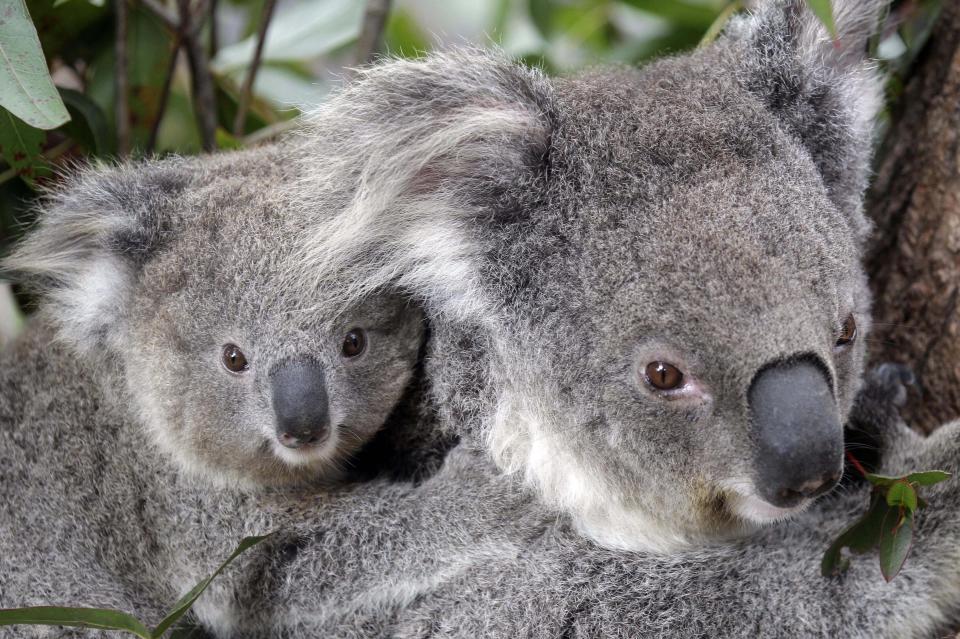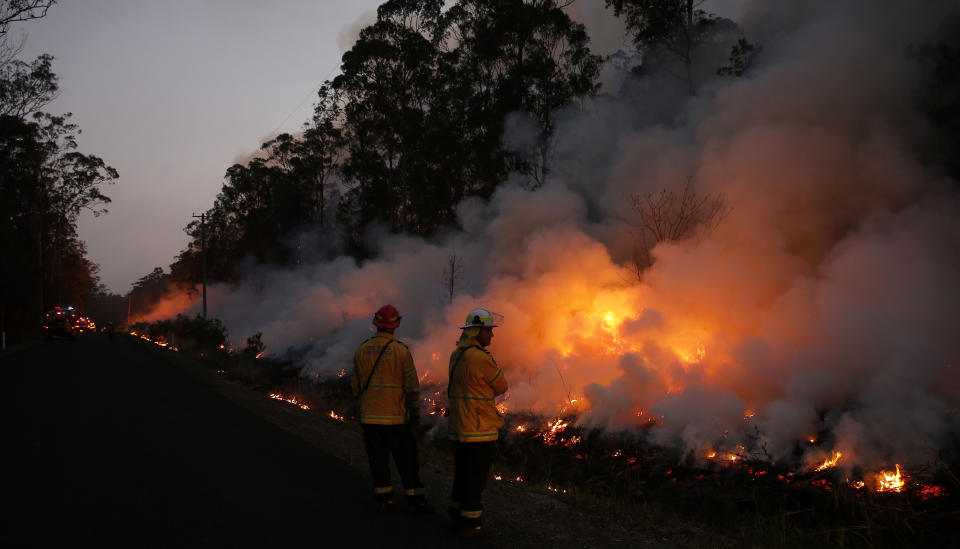Hundreds of koalas feared 'burned alive' in three days of bushfire
It's feared hundreds of koalas have been burned alive by an out-of-control bushfire in northern NSW that's raged unchecked for days in the heartland of their prime habitat.
The blaze, reportedly caused by a lightning strike near Port Macquarie, has burned more than 2000 hectares, including an important koala breeding ground.
Port Macquarie Koala Hospital president Sue Ashton told AAP the loss was a "tragedy".
"The beauty of this particular population is that it's so genetically diverse that it's of national significance," she said.
"A lot of the koalas are being mixed and cross-bred now ... so to lose a large part of that population is very devastating."

Ms Ashton said while the hospital's trained rescuers would be unable to search for any surviving koalas until Thursday or Friday, she feared the worst as koalas were "terrible" at coping in a bushfire scenario.
"What generally happens in a fire is the koala climbs right up to the top of the tree and curls into a little ball," she said.
"So often the flames will just go over the top and singe the outside, but with really intense fires it can burn them alive."
Ms Ashton said even if koalas safely avoid a blaze, they can burn their paws and claws while climbing down from smouldering trees, which can leave them unable to climb properly again.
The hospital, which can house up to 40 koalas, has rallied more than 150 volunteers to deal with the expected influx of injured animals.
"In a disaster people just switch on and you do what you have to do," Ms Ashton said.
"No one can control nature, but there's sadness because we care so much about the koalas."
Although not officially listed as endangered, the koala population is threatened by urbanisation and habitat destruction.

Sydneysiders may have to put up with smoke haze triggered by the blaze, which continues to burn in the area of Lake Innes and Lake Cathie, south of Port Macquarie.
The fire triggered an emergency warning on Tuesday, but early on Wednesday had been downgraded to advice level as conditions eased.
NSW Rural Fire Service spokesman Greg Allan said north-easterly winds had pushed smoke from the blaze as far south as Wollongong and Nowra.
"It's still an active fire and won't be out for some time," Mr Allan said.
"The winds are pushing it down along the coast, which will keep happening as long as the fire is burning."
The blaze, which has been burning for several days, broke containment lines earlier on Tuesday.
"Firefighters will be conducting back-burning operations where local conditions allow today," NSW RFS said in a statement.
"You will see an increase in smoke and flames while these operations are carried out."

Residents in Lake Cathie, Long Point, Bonny Hills, Kew, Kendall, Herons Creek and Bobs Creek were warned to monitor conditions.
NSW Health reminded people that children, older adults and people with heart and lung conditions were most susceptible to the effects of air pollution and excessive smoke.
There were 71 fires burning across NSW as of Wednesday morning, with 30 yet to be contained.
Much of state's east remains under very high fire danger.
This includes the greater Hunter, greater Sydney, Illawarra/Shoalhaven, Monaro alpine, Southern Ranges and Central Ranges fire areas.
Do you have a story tip? Email: newsroomau@yahoonews.com.
You can also follow us on Facebook and Twitter, download the Yahoo News app from the App Store or Google Play and stay up to date with the latest news with Yahoo’s daily newsletter. Sign up here.


